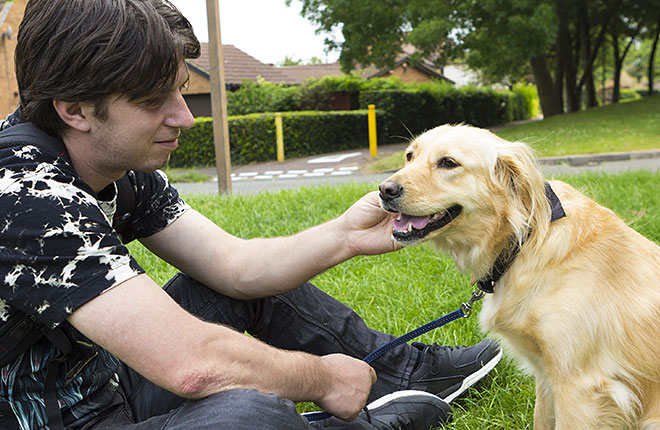Did you know that different types of ticks can transmit different kinds of tick-borne illnesses? Depending on where you live, you may have several species of ticks just waiting to bite you or your dog on your next outdoor adventure. One of these species that most dog and cat owners are not familiar with is the Gulf Coast tick[1].
What is the Gulf Coast Tick?
If this is the first time you’re hearing about this tick, you’re not alone. 83% of dog owners couldn’t identify the Gulf Coast tick as a threat in their area, even though they live where this tick is prevalent[1].

The Gulf Coast tick is a species of tick that may spread diseases to your dog or cause tick paralysis[2]. The Gulf Coast tick is mainly found in the Southeast region of the U.S. in cities including Atlanta, Charleston, Tampa, and Miami, and continues to spread north and west, as far as Maryland and Oklahoma. Take a look at this map from the CDC to see where the Gulf Coast tick is currently active[3].
A Common Disease the Gulf Coast Tick Can Cause
Tick Paralysis
Tick paralysis is a serious medical condition that is caused by a neurotoxin found in tick saliva that is passed onto your dog (or you) after tick attachment. Tick paralysis is caused by many tick species, including the Gulf Coast tick. Signs of infection include change or loss of bark, hind limb weakness and incoordination, breathing difficulty, gagging or coughing, vomiting, and difficulty eating[4]. If you suspect tick paralysis in your dog, see your veterinarian immediately, because left untreated, tick paralysis may be fatal.
How to Protect Your Dog From the Gulf Coast Tick
After spending time outdoors, always check your dog for ticks. Every area of the United States has ticks, so it’s important to keep a close watch even if you live beyond the Gulf Coast region.
Next, you’ll want to learn how to recognize the Gulf Coast tick.
It’s important to note that not all tick and flea products protect dogs from the Gulf Coast tick. 80% of dog owners surveyed believe their dog’s tick and flea product protects against the Gulf Coast tick, but that may not be true[1]. Therefore, it’s crucial that you choose a product that does. Ask your veterinarian about the only tick and flea chewable that is FDA approved to kill the Gulf Coast tick.
ZPC-00267R2
Important Safety Information: Use with caution in dogs with a history of seizures. Simparica Trio contains sarolaner, a member of the isoxazoline class which has been associated with neurologic adverse reactions including tremors, ataxia, and seizures in dogs with or without a history of neurologic disorders. The safe use of Simparica Trio has not been evaluated in breeding, pregnant, or lactating dogs. The most frequently reported adverse reactions in clinical trials were vomiting and diarrhea. See full Prescribing Information.
SIMPARICA TRIO is indicated for the prevention of heartworm disease caused by Dirofilaria immitis and for the treatment and control of roundworm (immature adult and adult Toxocara canis and adult Toxascaris leonina) and hookworm (L4, immature adult, and adult Ancylostoma caninum and adult Uncinaria stenocephala) infections. SIMPARICA TRIO kills adult fleas (Ctenocephalides felis) and is indicated for the treatment and prevention of flea infestations, and the treatment and control of tick infestations with Amblyomma americanum (lone star tick), Amblyomma maculatum (Gulf Coast tick), Dermacentor variabilis (American dog tick), Ixodes scapularis (black-legged tick), Rhipicephalus sanguineus (brown dog tick), and Haemaphysalis longicornis (Asian longhorned tick) for one month in dogs and puppies 8 weeks of age and older, and weighing 2.8 pounds or greater. SIMPARICA TRIO is indicated for the prevention of Borrelia burgdorferi infections as a direct result of killing Ixodes scapularis vector ticks.
- Online survey conducted by Zoetis Petcare, a U.S. business unit of Zoetis, and Wakefield Research between January 3 and January 18, 2019. Data on file.
- Hertz, J. C., & Kaufman, P. E. “Gulf Coast Tick, Amblyomma maculatum Koch.” 2007. University of Florida [PDF File]. Retrieved from https://edis.ifas.ufl.edu/pdffiles/IN/IN106200.pdf. Accessed May 12, 2025.
- Geographic distribution of ticks that bite humans. CDC. NCEZID_Info_Map Gulf Coast Tick (Amblyomma maculatum). Accessed March 20, 2025.
- Symptoms: Companion Vector-Borne Diseases. Tick Paralysis. http://www.cvbd.org/en/tick-borne-diseases/tick-paralysis/clinical-signs/. Accessed May 12, 2025.






